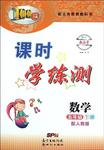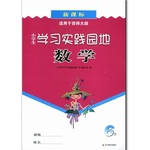题目内容
Why should you tour Spain with SpainExchange?
◇We design and personalize(个性化)your tour to fit your desires and needs.
◇We are Spain insiders: we are located in Spain and we know the country.
You get the tour you want. You do not have to follow a schedule, but we encourage you to make your own with our help. If you have a few cities in Spain that you want to visit or a specific theme for your tour that needs some fine-tuning(微调), we can do it for you. On the contrary, if you are not sure what’s here and need some extra help, we can help you. We can assist you in developing the tour that fits you and your students.
You get more for your money. Yes, it may cost you the same price as with the other companies—usually less—but you will receive more in return. With any other company you will be mixed with other groups. With SpainExchange, your tour is for yourself and your students only: your group alone will be in your bus; your students will be housed in double rooms; they will have 2 paid meals per day, and your entrance fees will be on us.
Your students will have an educational experience they’ll never forget. The students will learn about world history, not just Spanish history, art history, archeology, Spanish culture, and much more. Many students have “fallen in love” with Spain and make plans for future studies here. And teachers are amazed at how much Spain has to offer. As one teacher said, “I can’t wait to come back and see the rest.”
Only a professional Spain insider that is flexible to design the tour that fits your group can provide all that for you. Just tell us what you want and enjoy the ride.
What is the advantage of SpainExchange over other touring companies?
A.It is designed for your personalized needs.
B.It is much cheaper than the tours from other companies.
C.It is organized by a Spanish-speaking agency.
D.It offers double rooms and 2 paid meals per day.
Who do you suppose this passage is written to?
A.School teachers. B.College students.
C.Spain locals. D.Exchange professors.
The passage is probably take from .
A.Wild “Burning” Journey Back To Spain
B.Spain Teaching School Tries Something New
C.A World of Novels: Picks For Best Foreign Fictions
D.Tour Brochure(手册): Learning Beyond Classroom
【小题1】A
【小题2】A
【小题3】D
解析:
略

 百年学典课时学练测系列答案
百年学典课时学练测系列答案 仁爱英语同步练习册系列答案
仁爱英语同步练习册系列答案 学习实践园地系列答案
学习实践园地系列答案Let children learn to judge their own work. A child learning to talk does not learn by being corrected all the time: if corrected too much, he will stop talking. He notices a thousand times a day the difference between the language he uses and the language those around him use. Bit by bit, he makes the necessary changes to make his language like other people’s.
In the same way, children are learning to do all the other things: they learn to do without being taught to walk, run, climb, whistle, ride a bicycle, compare their own performances with those of more skilled people, and slowly make the needed changes. But in school we never give a child a chance to find out his mistakes and correct them for himself. We do it all for him. We act as if we thought that he would never notice a mistake unless it was pointed out to him, or correct it unless he was made to. Let him work out, with the help of other children if he wants it, what this word says, what the answer is to that problem, whether this is a good way of saying or doing this or not.
If it is a matter of right answer, as it may be in mathematics or science, give him the answer book. Let him correct his own papers. Why should we teachers waste time on such routine(常规) work? Our job should be to help the child when he tells us that he can’t find the way to get the right answer. Let the children learn what all educated persons must some day learn, how to judge their own understanding, and how to know what they know or do not know.
【小题1】The first paragraph is written mainly to _________.
| A.give advice on children’s language learning |
| B.tell us the fewer mistakes we correct, the better children will learn a language |
| C.suggest children are often too stubborn to accept advice |
| D.lead to the topic of the passage |
| A.Give children correct answers. |
| B.Allow children to make mistakes. |
| C.Point out children’s mistakes to them. |
| D.Let children mark their own work. |
| A.allow children to learn from each other |
| B.point out children’s mistakes whenever found |
| C.give children more book knowledge |
| D.correct children’s mistakes as soon as possible |
| A.listening to skilled people’s advice |
| B.asking older people many questions |
| C.making mistakes and having them corrected |
| D.doing what other people do |
You’re rushing to work and a man ahead of you collapses on the sidewalk. Do you stop to help? In a study of by-standers, it was found that some people avert their gaze and keep on walking rather than stop and get involved.
“There is a tendency to decide that no action is needed.” says a psychologist. “The first thoughts that pop into your mind often keep you from offering help. In order to take action, you have to work against them.” Here are some common thoughts that might prevent you from helping.
● Why should I be the one? I’m probably not the most competent(有能力的)person in this crowd. You might think someone older or with more medical knowledge should offer assistance.
● What if he doesn’t really need my help? The fear of embarrassment is powerful; no one wants to risk looking foolish in front of others.
● No one else looks concerned- this must not be a problem. We can follow the people around us, but most people tend to hold back their emotions in public.
“If you spot trouble and find yourself explaining inaction, force yourself to stop and evaluate the situation instead of walking on,” says the psychologist. “Then retry to involve other people; you don’t have to take on the entire responsibility of being helpful. Sometimes it’s just a matter of turning to the person next to you and saying, ‘It looks like we should do something.’ Or asking someone if an ambulance has been called and, if not, to call for one. Once you take action, most people will follow you.”
【小题1】Which is NOT the common thought that stops you from helping others?
| A.I’m not the very person capable of setting the problem. |
| B.It looks like we should do something. |
| C.It must not be a problem as no one else is concerned. |
| D.He doesn’t really need my help. |
| A.They will call for help and then walk away. |
| B.They will stop and offer help. |
| C.They will turn away their eyes and go on walking. |
| D.They will laugh at him. |
| A.we should call the ambulance as soon as we can |
| B.we should stop and evaluate the situation and try to make other people follow |
| C.we should take on the whole responsibility and do something alone |
| D.we should turn to other people and ask them to take on the responsibility |
| A.ask others for help and call the police |
| B.get along well with the passers-by who spot the trouble |
| C.go directly to the police station |
| D.work against the first thoughts that prevent you offering help |
| A.to give others a hand |
| B.to be more competent |
| C.not to risk looking foolish |
| D.to stop and evaluate the situation |
Long before the white man came to the America, the land belonged to the American Indian nations, The nation of the Cherokees lived in what is now the southeastern part of the United States.
After the white man came, the Cherokees copied many of their ways. One Cherokee named Sequoyah saw how important reading and writing was to the white man. He decided to invent a way to write down the spoken Cherokee language. He began by making word pictures. For each word he drew a picture. But that proved impossible; there were just too many words. Then he took the 85 sounds that made up the language. Using his own imagination and an English spelling book, Sequoyah invented a sign for each sound. His alphabet proved amazingly easy to learn. Before long, many Cherokees knew how to read and write in their own language. By 1828, they were even printing their own newspaper.
In 1830, the US congress passed a law. It allowed the government to remove Indians from their lands. The Cherokees refused to go. They had lived on their lands for centuries. It belonged to them. Why should they go to a strange land far beyond the Mississippi River?
The army was sent to drive the Cherokees out. Soldiers surrounded their villages and marched them at gunpoint into the western territory. The sick, the old and the small children went in carts, along with their belongings. The rest of the people marched on foot or rode on horseback. It was November, yet many of them still wore their summer clothes. Cold and hungry, the Cherokees were quickly exhausted by the hardships of journey. Many dropped dead and were buried by the roadside. When the last group arrived in their new home in March 1839, more than 4000 had died. It was in deed a march of death.
【小题1】 The Cherokee Nation used to live____________.
| A.on the American continent | B.in the southeastern part of the US |
| C.beyond the Mississippi River | D.in the western territory |
| A.writing down the spoken language | B.making word pictures |
| C.teaching his people reading | D.printing their own newspaper |
| A.allow the Cherokees to stay where they were |
| B.send the army to help the Cherokees |
| C.force the Cherokees to move westward |
| D.forbid the Cherokees to read their newspaper |
| A.they went in carts | B.they went on horseback |
| C.they marched on foot | D.all of the above |
| A.they were not willing to go there |
| B.the government did not provide transportation |
| C.they did not have enough food and clothes |
| D.the journey was long and boring |